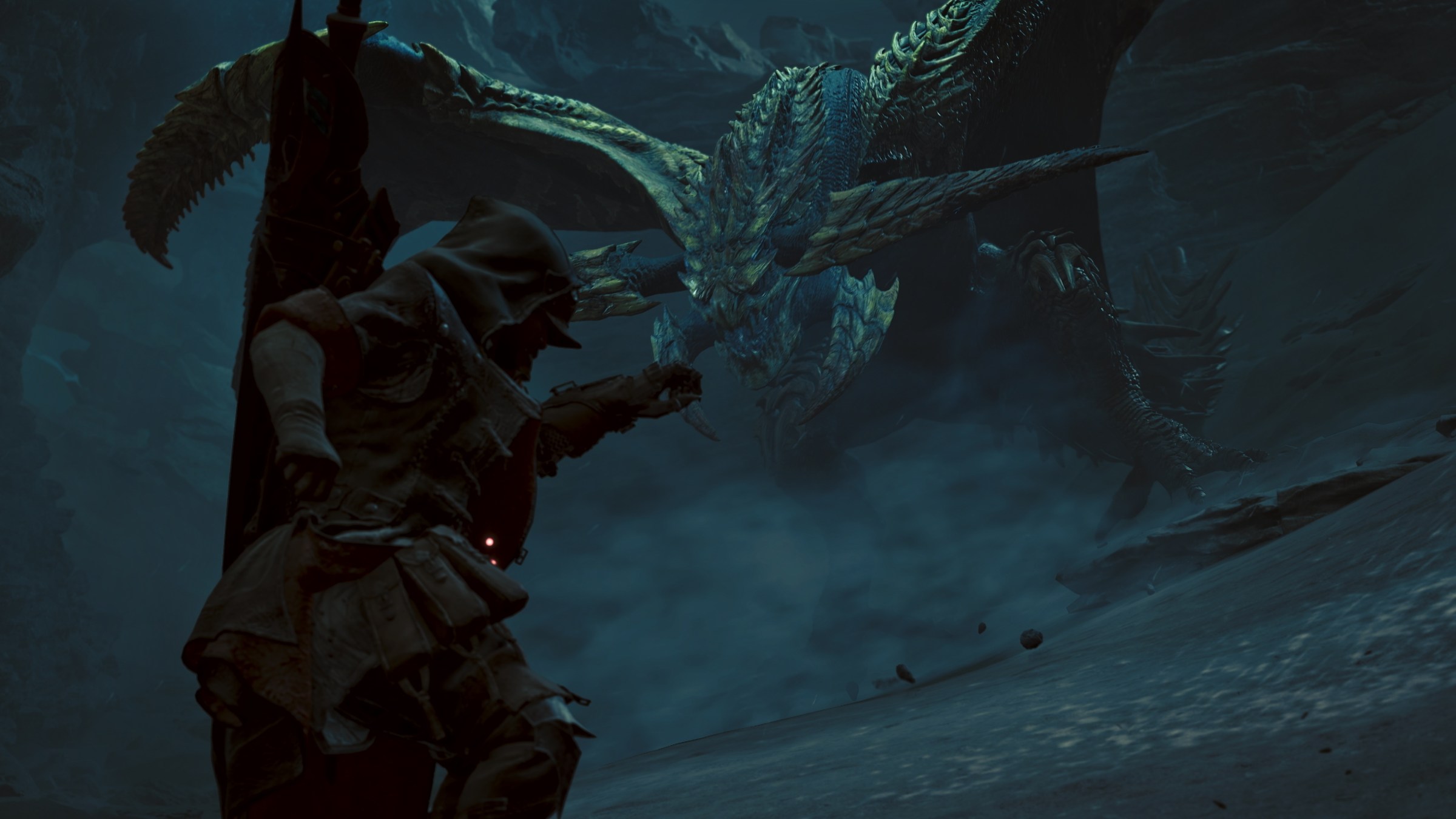Monster Hunter Wilds made me want to explore its ecosystem
As Capcom’s Monster Hunter series has grown in size and popularity over the past 20 years, so too have the games’ worlds, evolving from discrete zones to vast open-world environments populated with smarter, more believable creatures. Monster Hunter Wilds continues that evolution, with an emphasis on the ecosystem, an ever-changing climate and nature that feels more realistic than ever before.
I got to taste a little bit of what Monster Hunter Wilds has to offer during a hands-on event in August, where a few new elements stood out that could have a huge impact on the way players experience this world.
That starts with the new mount, a dinosaur-like creature called a Seikret. I got my hands on a Seikret from the game’s opening moments, which serve as a sort of tutorial for how to ride and control one. Thanks to this speedy new mount, it’s easier than ever to keep up with your prey in Monster Hunter WildsThe Seikret also opens up new combat tactics: you can store a backup weapon on your Seikret, which you can switch to while riding it – very useful if you need a ranged weapon on the go.
But it was during my struggle to hunt down a Doshaguma – a new bear-like monster – that the ecosystem of Monster Hunter Wilds was starting to show its potential. In an earlier mission, I was tasked with killing the alpha Doshaguma in a pack of the beasts, and was told that launching a large dung pod at a group of Doshaguma would help split them up. And it did; I launched that shit right at an attacking pack and watched them panic. The chase was on.
Shortly after the chase began, the Doshaguma alpha ran into an area of bad weather that quickly turned into a raging thunderstorm. The Doshaguma had unwittingly run into the territory of a Rey Dau, a new type of flying wyvern that is the apex predator of the desert region known as Windward Plains. A turf war was underway. The two beasts clashed, and for a moment I thought the Rey Dau would finish the job for me. It shot the Doshaguma with lightning bolts, causing the beast to lose hundreds of life points.
The Doshaguma fled and found refuge in a valley. He was badly wounded and with the aid of my great sword (and some help from summoned AI-controlled allies) I quickly dispatched the beast. With the aid of Monster Hunter Wilds‘ new Focus Mode attacks, which offered an easier to follow camera angle of the Doshaguma during battle, I defeated the alpha and cut down my loot.
After I finished the Doshaguma quest, I learned from a Capcom employee that I had another option. Instead of using the dung pod to wreak havoc among the Doshaguma group, I could have lured the trio into a sand trap and drowned them in quicksand. Apparently, only the alpha Doshaguma of the group would have been strong enough to fight his way out of that sand trap. Of course, I wouldn’t have had the help of the Rey Dau, but the sand trap plan sounds like another clever way to Monster Hunter Wilds‘ dynamic ecosystem to engage in battles.
I’ve actually only been allowed to play with Monster Hunter Wilds‘ desert setting, but the game’s ecosystem is clearly more than just sand, lightning, and wind. The game’s wetlands and jungle flora of Scarlet Forest certainly have their own qualities that will lead to different gameplay strategies. I’m not exactly looking forward to facing the new threat there, the arachnid known as Lala Barina, when I Wilderness next time.
We will learn much more about Monster Hunter Wilds‘ diverse ecosystem and the creatures that live within it when the game launches sometime in 2025 for PlayStation 5, Windows PC, and Xbox Series X.

